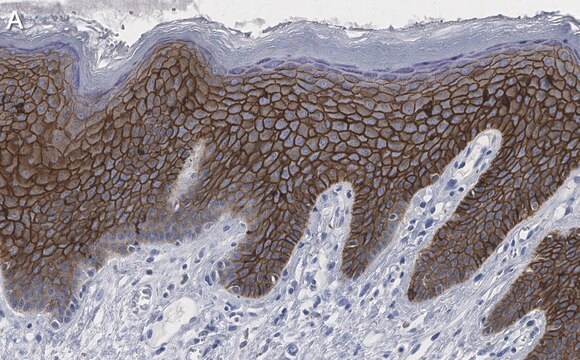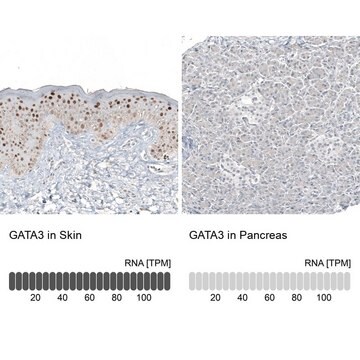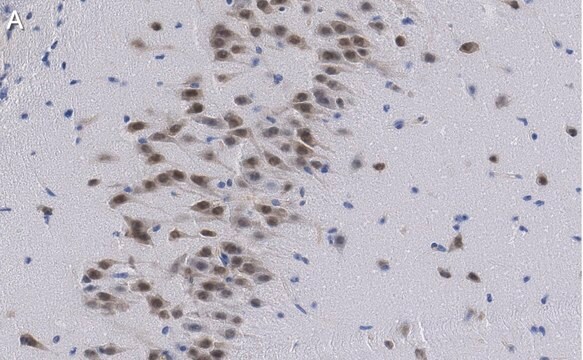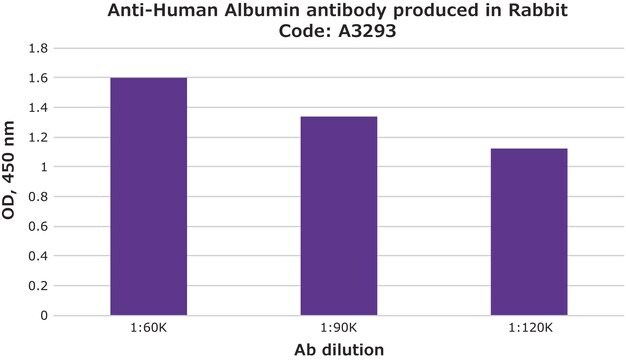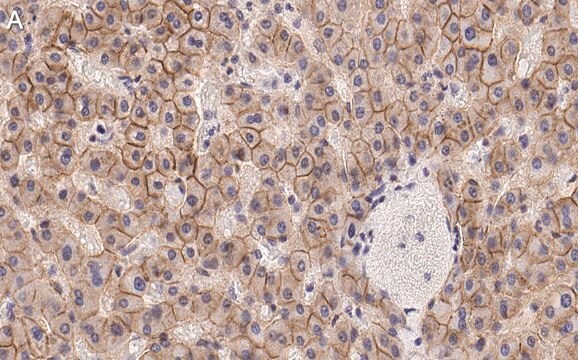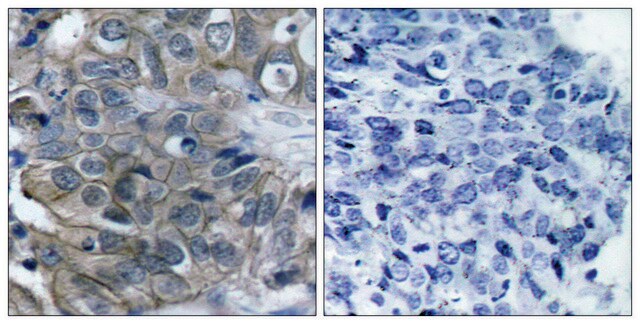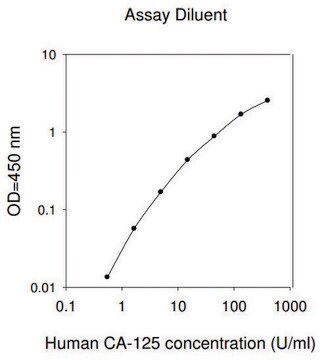일반 설명
We are committed to bringing you greener alternative products, which adhere to one or more of The 12 Principles of Green Chemistry.This antibody is Preservative-free, produced without the harm or sacrifice of animals and exceptionally stable to allow for ambient shipping and storage if needed and thus aligns with "Waste Prevention", "Designing Safer Chemicals" and "Design for Energy Efficiency".
Click here for more information.
ZooMAb antibodies represent an entirely new generation of recombinant monoclonal antibodies.
Each ZooMAb antibody is manufactured using our proprietary recombinant expression system, purified to homogeneity, and precisely dispensed to produce robust and highly reproducible lot-to-lot consistency. Only top-performing clones are released for use by researchers. Each antibody is validated for high specificity and affinity across multiple applications, including its most commonly used application. ZooMAb antibodies are reliably available and ready to ship when you need them.
Learn more about ZooMAb here.특이성
Clone 1F23 is a ZooMAb rabbit recombinant monoclonal antibody that specifically detects Mucin-1 (MUC1). It targets an epitope within 16 amino acids from the C-terminal, extracellular domain.
면역원
KLH-conjugated linear peptide corresponding to 16 amino acids from Human Mucin-1.
애플리케이션
Quality Control Testing
Immunohistochemistry (Paraffin) Analysis: A 1:1,000 dilution of this antibody detected Mucin-1 (MUC1) in human stomach tissue sections.Tested Applications Affinity Binding Assay: A representative lot of this antibody bound Mucin-1 (MUC1) peptide with a KD of 1.6 x 10-6 in an affinity binding assay.Immunocytochemistry Analysis: A 1:100 dilution from a representative lot detected Mucin-1 (MUC1) in HeLa, A431, HepG2, NIH 3T3 and MCF-7 cells.Western Blotting Analysis: A 1:1,000 dilution from a representative lot detected Mucin-1 (MUC1) in Mouse Pancreas tissue lysate.Flow Cytometry Analysis: 1 μg from a representative lot detected Mucin-1 (MUC1) in one million HeLa cells.Note: Actual optimal working dilutions must be determined by end user as specimens, and experimental conditions may vary with the end user
Anti-MUC1, clone 1F23 ZooMAb, Cat. No. ZRB1016, is a recombinant Rabbit monoclonal antibody that targets Mucin-1 and is tested for use in Affinity Binding Assay, Flow Cytometry, Immunocytochemistry, Immunohistochemistry (Paraffin), and Western Blotting.
표적 설명
Mucin-1 (UniProt: P15941; also known as MUC-1, Breast carcinoma-associated antigen DF3, Cancer antigen 15-3, CA 15-3, Carcinoma-associated mucin, Episialin, H23AG, Krebs von den Lungen-6, KL-6, PEMT, Peanut-reactive urinary mucin, PUM, Polymorphic epithelial mucin, PEM, Tumor-associated epithelial membrane antigen, EMA, Tumor-associated mucin, CD227) is encoded by the MUC1 (also known as PUM) gene (Gene ID: 4582) in human. Mucins are high molecular weight glycoproteins that consist of a mucin core protein and O-linked carbohydrates. Mucins are present on the surface of, and are secreted by, many glandular epithelial cells. They provide a barrier between the luminal membranes of cells in the epithelium and their environment. Mucins consist of a nonglobular protein backbone (apomucin) and many O-linked glycans. Mucin-1 is a highly glycosylated, single-pass type I membrane protein that is exclusively located in the apical domain of the plasma membrane of highly polarized epithelial cells and is internalized and recycled to cell membrane following endocytosis. Its expression has been reported in airway passages and in breast and uterine tissue. It is also expressed in activated and unactivated T-cells. It is overexpressed in epithelial tumors, such as breast and ovarian cancers. Mucin-1 is synthesized with a signal peptide (aa 1-23), which is subsequently removed to generate the mature form that contains an extracellular domain (aa 24-1158), a transmembrane domain (aa 1159-1181), and a cytoplasmic domain (aa 1182-1255). It consists of an alpha (aa 24-1097) and a beta (aa 1098-1255) subunit. The alpha subunit forms a tight, non-covalent heterodimeric complex with the proteolytically-released beta-subunit. The alpha subunit has cell adhesive properties. The beta subunit contains a C-terminal domain which is involved in cell signaling, through phosphorylations and protein-protein interactions. Phosphorylation on tyrosine in the C-terminal region increases its nuclear location. Phosphorylation by PKC delta induces binding of Mucin-1 to beta-catenin and thus decreases the formation of the beta-catenin/E-cadherin complex. Mutations in MUC1 have been linked to Medullary cystic kidney disease that is characterized by formation of renal cysts at the corticomedullary junction and impaired renal function. This ZooMAb recombinant monoclonal antibody, generated by our propriety technology, offers significantly enhanced specificity, affinity, reproducibility, and stability over conventional monoclonals.
물리적 형태
Purified recombinant rabbit monoclonal antibody IgG, lyophilized in PBS with 5% Trehalose, normal appearance a coarse or translucent resin. Contains no biocide or preservatives, such as azide, or any animal by-products. Larger pack sizes provided as multiples of 25 μL.
재구성
300 μg/mL after reconstitution at 25 μL per vial. Please refer to guidance on suggested starting dilutions and/or titers per application and sample type.
저장 및 안정성
Recommend storage of lyophilized product at 2-8°C; Before reconstitution, micro-centrifuge vials briefly to spin down material to bottom of the vial; Reconstitute each vial by adding 25 μL of filtered lab grade water or PBS; Reconstituted antibodies can be stored at 2-8°C, or -20°C for long term storage. Avoid repeated freeze-thaws.
법적 정보
ZooMAb is a registered trademark of Merck KGaA, Darmstadt, Germany
면책조항
Unless otherwise stated in our catalog or other company documentation accompanying the product(s), our products are intended for research use only and are not to be used for any other purpose, which includes but is not limited to, unauthorized commercial uses, in vitro diagnostic uses, ex vivo or in vivo therapeutic uses or any type of consumption or application to humans or animals.



